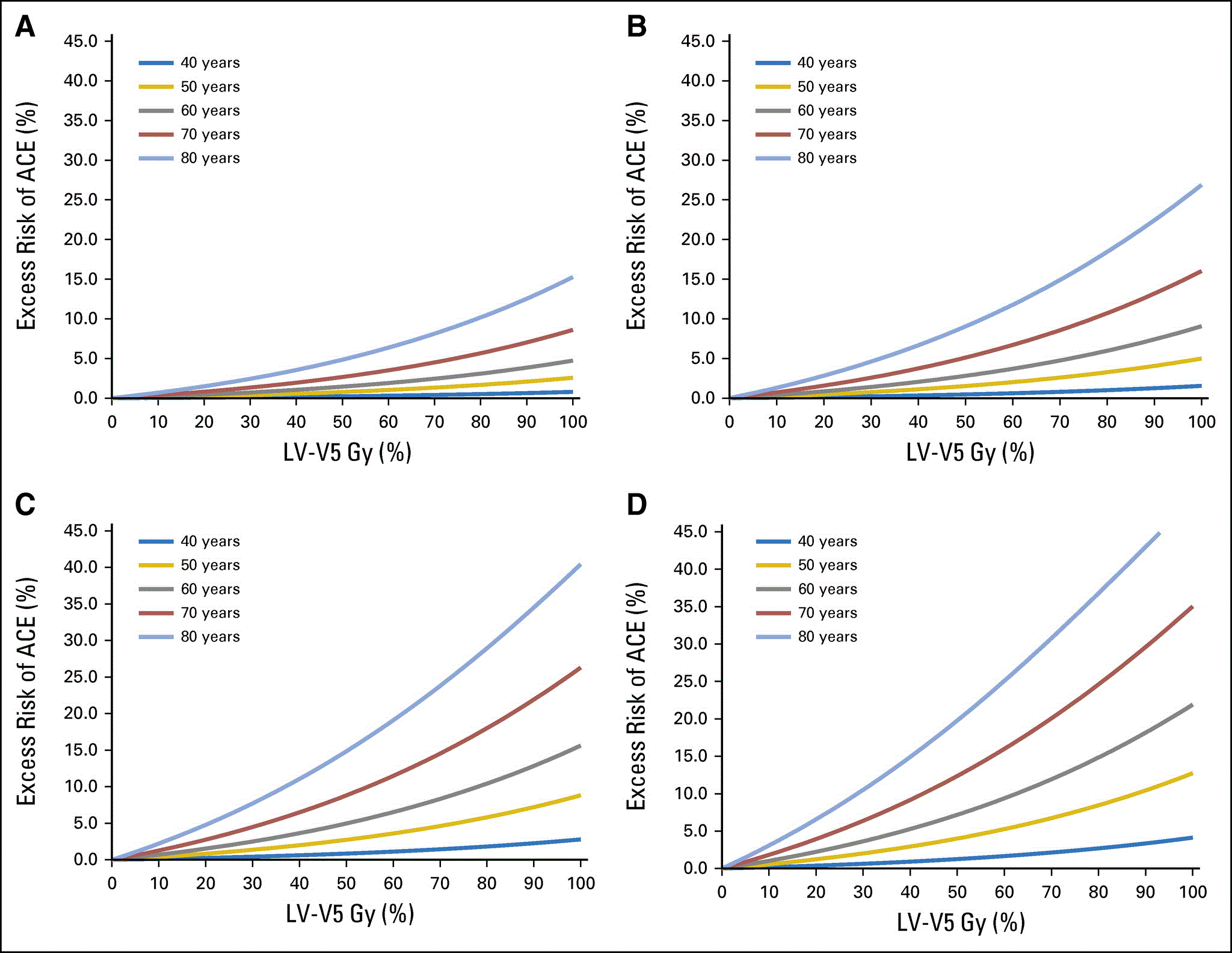(구)글로벌 핫이슈
방사선종양학
- 2017년 05월호
[J Clin Oncol] Validation and Modification of a Prediction Model for Acute Cardiac Events in Patients With Breast Cancer Treated With Radiotherapy Based on Three-Dimensional Dose Distributions to Cardiac Substructures.University of Groningen / Anne P.G Crijns*
- 출처
- J Clin Oncol
- 등재일
- 2017 Apr 10
- 저널이슈번호
- 35(11):1171-1178. doi: 10.1200/JCO.2016.69.8480. Epub 2017 Jan 17.
- 내용
Abstract
Purpose A relationship between mean heart dose (MHD) and acute coronary event (ACE) rate was reported in a study of patients with breast cancer (BC). The main objective of our cohort study was to validate this relationship and investigate if other dose-distribution parameters are better predictors for ACEs than MHD. Patients and Methods The cohort consisted of 910 consecutive female patients with BC treated with radiotherapy (RT) after breast-conserving surgery. The primary end point was cumulative incidence of ACEs within 9 years of follow-up. Both MHD and various dose-distribution parameters of the cardiac substructures were collected from three-dimensional computed tomography planning data. Results The median MHD was 2.37 Gy (range, 0.51 to 15.25 Gy). The median follow-up time was 7.6 years (range, 0.1 to 10.1 years), during which 30 patients experienced an ACE. The cumulative incidence of ACE increased by 16.5% per Gy (95% CI, 0.6 to 35.0; P = .042). Analysis showed that the volume of the left ventricle receiving 5 Gy (LV-V5) was the most important prognostic dose-volume parameter. The most optimal multivariable normal tissue complication probability model for ACEs consisted of LV-V5, age, and weighted ACE risk score per patient (c-statistic, 0.83; 95% CI, 0.75 to 0.91). Conclusion A significant dose-effect relationship was found for ACEs within 9 years after RT. Using MHD, the relative increase per Gy was similar to that reported in the previous study. In addition, LV-V5 seemed to be a better predictor for ACEs than MHD. This study confirms the importance of reducing exposure of the heart to radiation to avoid excess risk of ACEs after radiotherapy for BC.

Fig 3.
Excess risk of an acute coronary event (ACE) depending on the mean V5 of the left ventricle (LV-V5) in volume percentage calculated per age category and risk factor: (A) no cardiac risk factors, (B) diabetes, (C) hypertension, and (D) ischemic cardiac event. For example, a patient age 70 years with an LV-V5 of 50% and no cardiac risk factors has an excess risk of 2.52% of developing an ACE within 9 years after radiotherapy. If the same patient had a history of ischemic heart disease, with a similar value for LV-V5, the excess risk would increase to 8.42%.
Author information
van den Bogaard VA1, Ta BD1, van der Schaaf A1, Bouma AB1, Middag AM1, Bantema-Joppe EJ1, van Dijk LV1, van Dijk-Peters FB1, Marteijn LA1, de Bock GH1, Burgerhof JG1, Gietema JA1, Langendijk JA1, Maduro JH1, Crijns AP1.
1 All authors: University Medical Center Groningen, University of Groningen, Groningen, the Netherlands.
- 덧글달기







